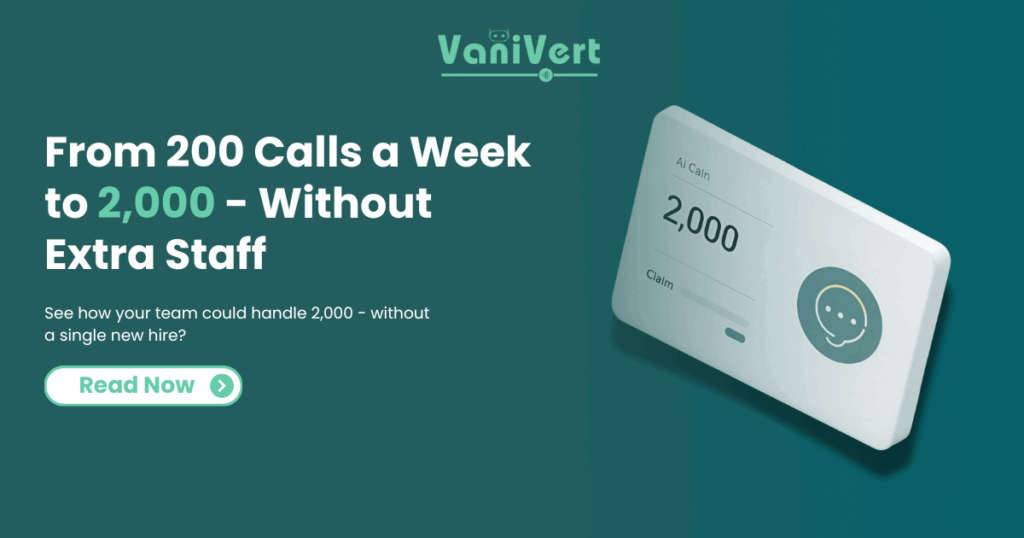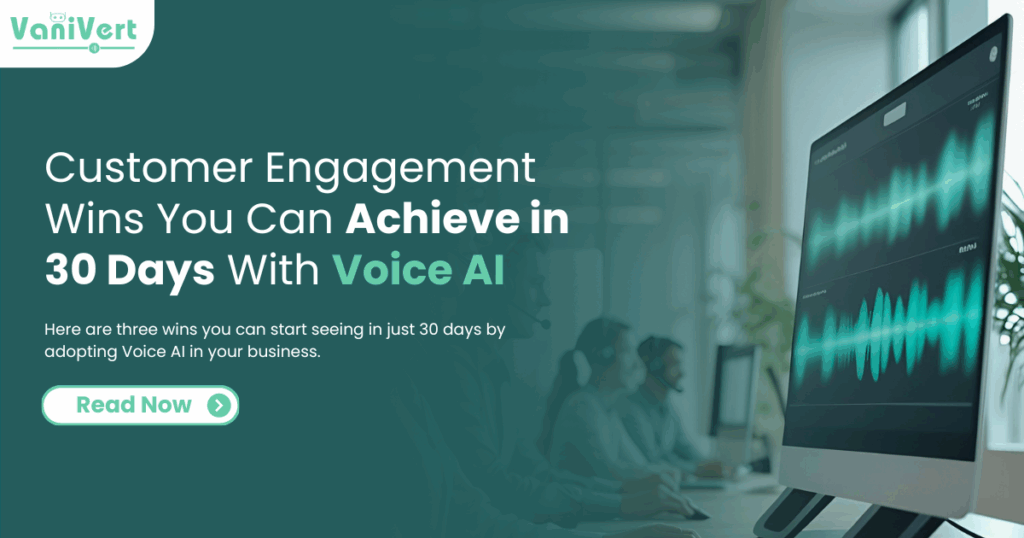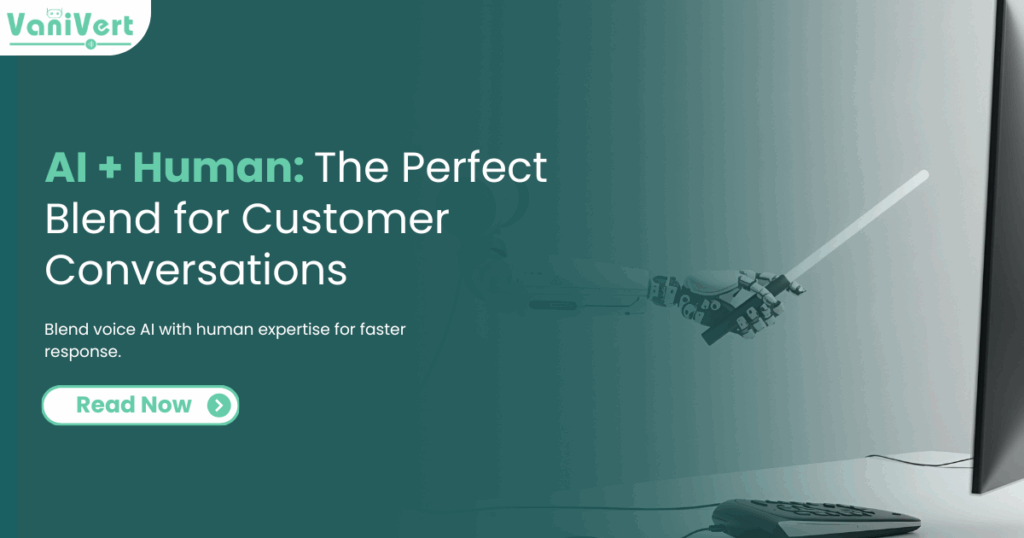
Voice AI for Outbound Calling: In sales and customer engagement, volume and speed matter.
If you’re reaching out to prospects days after they showed interest, you’re already behind. And if your team can’t scale their outreach, you’re leaving revenue on the table.
Most businesses understand this, but here’s the challenge:
Scaling calls traditionally means scaling people – and with that comes cost, complexity, and time.
So how do you 10× your calling capacity without increasing your team size?
The answer lies in Voice AI – and 2025 is the year businesses are discovering just how transformational it can be.
The Ground Reality of Manual Calling
If you’ve ever run a calling operation – whether for sales, service, collections, or customer follow-up – you already know the bottlenecks:
1. Limited Human Capacity
- An average sales rep can make 40–60 calls/day with decent quality.
- At 200 calls/week, you’re already stretching resources.
- Adding more calls means either lowering quality or hiring more people.
2. Delayed First Contact
- According to Inside Sales research, contacting a lead within 5 minutes makes you 21× more likely to qualify them compared to waiting 30 minutes.
- In reality, most leads get called hours or days later – interest cools, competitors move in, and the window is lost.
3. Repetitive Fatigue
- Asking the same questions 50 times/day takes a toll.
- Reps lose energy, tone drops, and conversations start sounding mechanical.
- This directly impacts conversion rates and customer experience.
4. Hidden Costs
- Hiring, training, monitoring, and replacing agents is expensive.
- Attrition in outbound teams can be 20–30% annually, meaning you’re constantly refilling the funnel.
The AI Calling Advantage – How It Changes the Game
This is where VaniVert’s Conversational Voice AI flips the model. Instead of humans handling every single call, AI takes care of the high-volume, repetitive, time-sensitive conversations – freeing your team to focus only on high-value opportunities.
Here’s how it works:
1. Instant Outreach
The AI can call a new lead within seconds of form submission or data capture.
- No waiting for someone to be free.
- No missed leads because the team is busy or off-shift.
2. Smart Qualification
AI asks relevant, business-specific questions to gauge intent, readiness, and need.
Only interested and qualified leads are passed to your sales team – along with a complete transcript and summary of the AI conversation.
3. Multilingual, Human-Like Conversation
VaniVert AI speaks multiple Indian languages, understands accents, and responds naturally – no robotic tone. This boosts engagement rates by 30–45% in multilingual markets.
4. Parallel Scalability
Need to make 2,000 calls today? AI runs them in parallel. No overtime. No burnout.
5. 24/7 Availability
Time zones, weekends, and off-hours are no longer barriers. Your outreach is always on.
Case Study: From 250 to 2,500 Calls/Week
An NBFC client was running a 250-calls/week operation with a team of six.
Here’s what happened when they deployed VaniVert AI:
Before AI:
- Agents spent 60% of their time chasing unresponsive leads.
- First contact happened 1–2 days after lead generation.
- Average conversion rate: 6%.
After AI:
- AI called every lead within 2 minutes of generation.
- Only qualified, interested leads were passed to human agents.
- Agents spent 80% of their time on decision-ready prospects.
- Call volume increased to 2,500/week without hiring a single person.
- Conversion rate jumped to 15% – a 2.5× improvement.
- Recovery call costs dropped by 40%.
The ROI Equation
Switching to Voice AI isn’t just about doing more calls – it’s about improving the ROI of every single call.
Cost Efficiency:
- Reduce manual call volume by 60–70%.
- Scale campaigns without scaling salaries.
Revenue Impact:
- Faster follow-ups = higher conversion rates.
- Consistent, fatigue-free conversations mean better customer experience.
Time Savings:
- Agents focus only on prospects worth their time.
- Managers spend less effort on training, monitoring, and quality control.
Beyond Sales – Where This Works
The beauty of Voice AI is that it’s not industry-bound.
It can be deployed anywhere repetitive, high-volume conversations happen:
- BFSI: Loan recovery, KYC renewals, lead qualification
- E-commerce: Order confirmations, delivery updates, abandoned cart calls
- B2B Sales: Event invites, follow-ups, demo scheduling
- Hospitality: Booking confirmations, post-stay feedback, promotions
- EdTech: Admission follow-ups, course reminders, fee payment prompts
Personalising at Scale – The Secret Sauce
One fear with automation is losing the human touch.
But with advances in natural language processing and CRM integration, AI calls can be as personalised as human calls – without the inconsistency.
Example:
- Greeting customers by name
- Referring to past purchases or interactions
- Switching language mid-call based on customer preference
The result? Personal connection + scalability – something manual teams struggle to achieve simultaneously.
The Big Shift: From Call Centres to Conversation Centres
Businesses that adopt Voice AI aren’t just making more calls. They’re transforming their entire engagement model:
- From reactive to proactive outreach
- From volume-based to quality-based calling
- From labour-intensive to tech-enabled efficiency
In 2025, the most competitive companies will be those that see Voice AI not as a replacement, but as an enabler – a way to give their teams superpowers.
Your Turn to 10×
If you’re stuck at 200 calls a week because your team is already maxed out, you have two choices:
- Keep hiring, training, and managing more people
- Or give your existing team the ability to handle 10× the calls with zero burnout
💡 Experience it now – Try VaniVert’s live demo and see how you can scale from 200 to 2,000 calls/week without adding staff.

